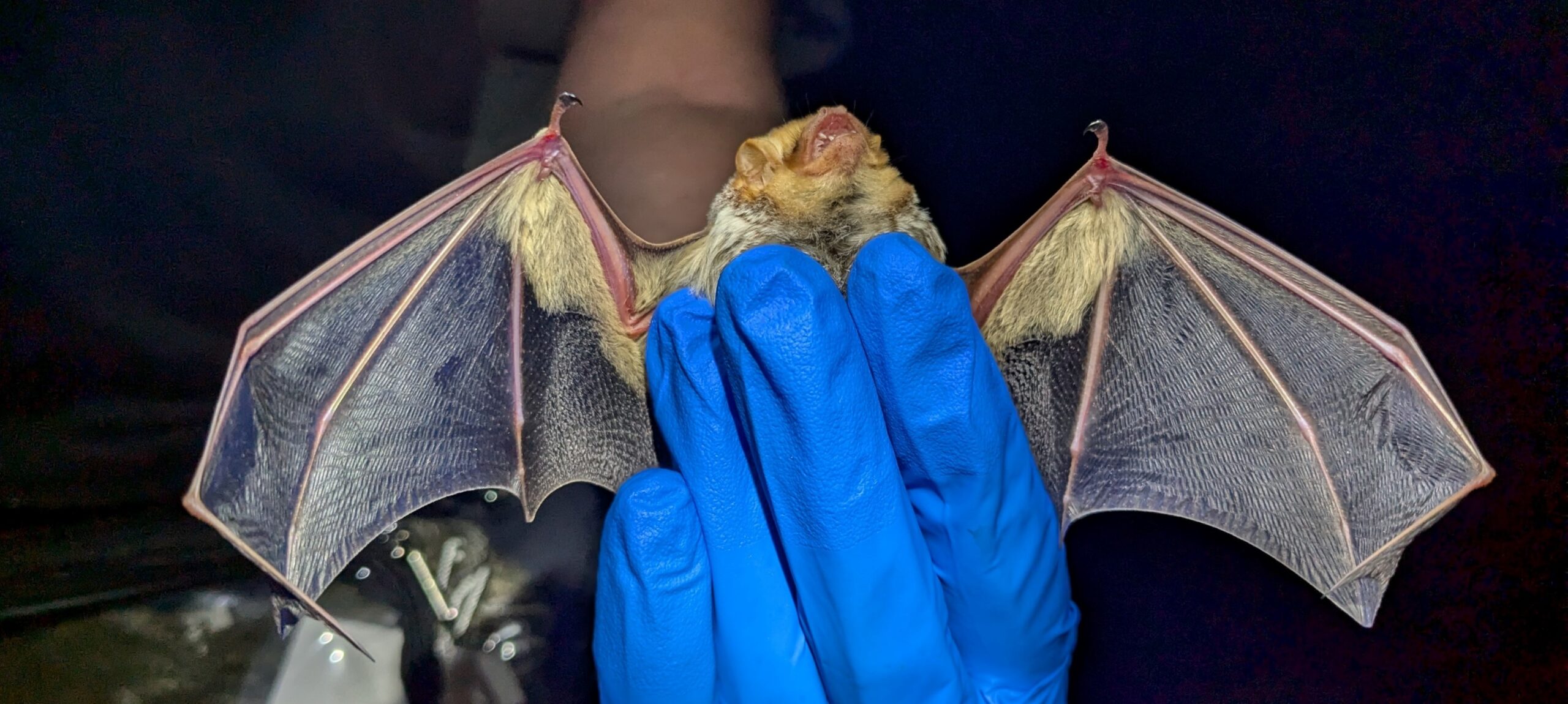
Photo of an eastern red bat.
Many bat biologists get asked on a regular basis about the importance of studying bats. We hope to provide you with a short introduction into their role in ecosystems, and share some of the challenges bat populations face, which will hopefully provide some insight into our passion for bats!
For starters, it is important to understand that ecosystems are comprised of organisms that rely on each other to play a particular role (that is, to occupy a niche) in order for the system to function naturally. In many ecosystems around the world, bats are a key element, providing services such as insect control, pollination, and seed dispersal.
Here in Illinois, the most important ecosystem role bats fill is insect population regulation, including pest management, as all Illinois bat species are insectivores. It is estimated that a colony of big brown bats can consume almost a pound of insects nightly. If you think that the number of mosquitoes and other insects outside in the summer months is intolerable, imagine how many more there would be without bats!

Bats, like this Indiana Bat (Myotis sodalis), use echolocation and their large ears to navigate and find their insect prey.
Bats help control insects that annoy us (such as flies and mosquitoes), and they also devour many of the insects that cause widespread crop damage. A recent study from Southern Illinois University at Carbondale (SIUC) highlighted the importance of bat pest control through reduced crop damage from insects, which also reduces crop susceptibility to fungus and rot that also contribute to lowered yield. The team at SIUC estimate that, globally, bats provide $1 billion of crop protection for corn alone.
In recent years, bats have experienced several challenges that have underscored the importance of bat conservation efforts. White-nose syndrome, a fungus that causes mortality to bats during hibernation, has caused widespread population declines. The fungus was first reported in New York in 2006 has since has spread across the eastern United States and was recently confirmed as far as Washington state. This disease occurs widely in Illinois bat hibernation sites. The fungus causes mortality in bats by growing over their nose, wings, and face, at a time when their immune system is less active and less able to fight the infection. The fungal growth in their skin causes irritation that awakens the bats during hibernation when there are no food resources available. The uncomfortable and unnaturally active bats quickly burn through the fat stores they need to survive winter, and, consequently, many bats die before spring arrives.

Barns and abandoned structures are important habitat for many bat species.
Illinois bat species face another challenge related more to summer habitats — the reduced availability of suitable old, decaying trees for use as summer roosts. Ongoing human encroachment on natural ecosystems in Illinois, and the country as a whole, clears the old forest stands containing this important roost habitat and modern forestry practices commonly include the harvest of mature trees, instead of allowing their natural decay. These activities are limiting roosting options for many of our bat species.
Finally, increased use of wind turbines provides humans with sustainable energy but can also cause mortality in certain bat populations when these bats fly into or near spinning turbine blades.
With all of these recent challenges, bat populations have significantly decreased in the eastern United States. Bats are slow to recover from population disturbance because of their slow reproductive rate. Most bats only have one, possibly two, pups per year which means it may take decades for these populations to rebound. By gaining a better understanding of bat species life history needs, and by documenting the distribution and occurrence of bats across Illinois, we can better protect the roosts and food resources bat populations need, while at the same time trying to reduce impacts of some of the challenges they face.
